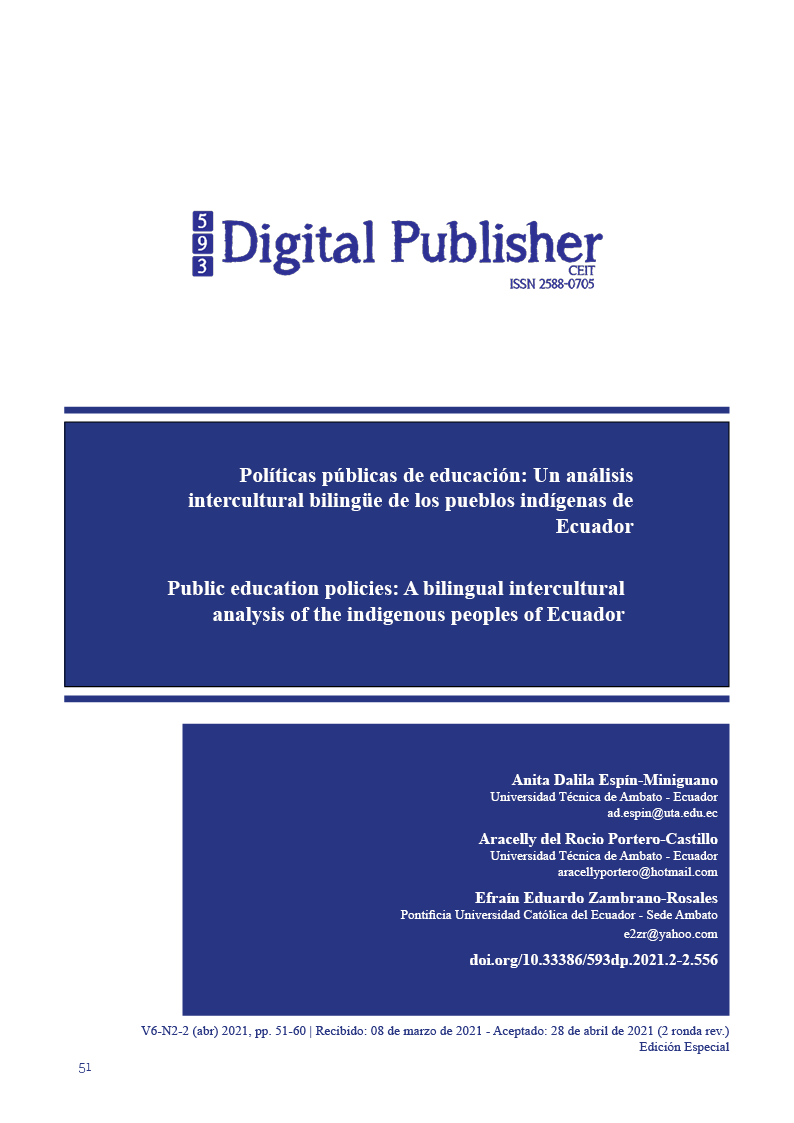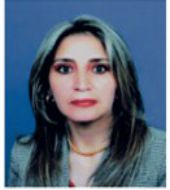Public education policies: A bilingual intercultural analysis of the indigenous peoples of Ecuador
Main Article Content
Abstract
The constitution of 2008, called for the creation of public policies that allow solving the problems which Ecuador had to deal. Based on this, the Ministry of Education created and executed several public policies that sought to leave behind the mediocrity of the Ecuadorian educational system. However, these public policies turned out to be a double-edged sword, where they benefited and improved education in the urban area, but also eliminated community schools located in several indigenous communities. This resulted in Bilingual Intercultural Education not being taken into account and therefore, the culture, the language, the ancestral knowledge and in itself the community life become weaker every day. As of 2016, with the arrival of Lenin Moreno to the presidency, there is a possibility that Bilingual Intercultural Education will once again have an important role, especially in indigenous education.
Downloads
Article Details

This work is licensed under a Creative Commons Attribution-NonCommercial-ShareAlike 4.0 International License.
1. Derechos de autor
Las obras que se publican en 593 Digital Publisher CEIT están sujetas a los siguientes términos:
1.1. 593 Digital Publisher CEIT, conserva los derechos patrimoniales (copyright) de las obras publicadas, favorece y permite la reutilización de las mismas bajo la licencia Licencia Creative Commons 4.0 de Reconocimiento-NoComercial-CompartirIgual 4.0, por lo cual se pueden copiar, usar, difundir, transmitir y exponer públicamente, siempre que:
1.1.a. Se cite la autoría y fuente original de su publicación (revista, editorial, URL).
1.1.b. No se usen para fines comerciales u onerosos.
1.1.c. Se mencione la existencia y especificaciones de esta licencia de uso.
References
Abarca, G. (2015). Educación Intercultural Bilingüe: Educación y Diversidad. Apuntes Educación y Desarrollo Post 2015, (9).
Benito Gil, V. J. (2017). Las Políticas Públicas de Educación en Ecuador, como una de las manifestaciones e instrumentos del Plan Nacional para el Buen Vivir.
Besabe Serrano, S. (2015). La Revolución Ciudadana de Rafael Correa. Foreign Affairs Latinoamercia. Recuperado 25 de abril de 2019 de: http://revistafal.com/larevolucion-ciudadana-de-rafael-correa/
Conejo Arellano, A. (2008). Educación Intercultural Bilingüe en el Ecuador. La propuesta educativa y su proceso.Alteridad. Revista de Educación, 3 (2), 64-82.
Confederación de Nacionalidades indígenas del Ecuador. (2018). Lenín moreno firmará decreto de creación de la secretaría del sistema de educación intercultural bilingüe. Recuperado 19 de abril de 2019 de https://conaie.org/2018/07/04/leninmoreno-firmara-decreto-creacion-la-secretaria-del-sistema-educacionintercultural-bilingue/
Constituyente, E. A. (2008). Constitución de la República del Ecuador. Contrato Social por la Educación. (31 de octubre de 2016). Se nos fue la alegría. [Archivo de video]. Recuperado 29 de abril de 2019 de https://www.youtube.com/watch?v=4TWtjbQBo5w
El Comercio. (2016). Escuelas del Milenio: ¿elefantes blancos o caballos de Troya contra la pobreza?. Recuperado 19 de abril de 2019 de https://www.elcomercio.com/tendencias/augustoespinosa-declaracionesleninmoreno-escuelasdelmilenio-pobreza.html 42
El Comercio. (2019). Dos escuelas se reabrieron este jueves 7 de febrero en la Sierra Centro. Recuperado 19 de abril de 2019 de https://www.elcomercio.com/actualidad/escuelas-comunitarias-educacion-ninosclases.html
El Comercio. (2019). Moreno anuncia una hora diaria del Gobierno para la enseñanza de valores. Recuperado 19 de abril de 2019 de https://www.elcomercio.com/actualidad/lenin-moreno-valores-escuelaseducacion.html
El Universo. (2019). Unas 1000 escuelas comunitarias se reabrirán este 2019 en Ecuador. Recuperado 19 de abril de 2019 de https://www.eluniverso.com/noticias/2019/01/31/nota/7166471/1000-escuelascomunitarias-se-aperturarian-2019-e-ecuador
Bayardo. E. (2016). Las instituciones educativas indígenas en el Ecuador y su dialéctica con el estado. ReHuSo: Revista de Ciencias Humanísticas y Sociales. e-ISSN 2550-6587. URL: www. revistas. utm. edu. ec/index. php/Rehuso, 1(3), 31-44.
Granda Merchán, S. (2016). Estado, educación y pueblos indígenas en los Andes ecuatorianos. Alteridad. Revista de educación. 11 (2)
Huete, D. La deuda insaldable. Análisis de la política pública para el ¿Fortalecimiento? de la Educación Intercultural Bilingüe en Ecuador. Facultad Latinoamericana de Ciencias Sociales. Quito. López, L. E., &
Küper, W. (1999). La educación intercultural bilingüe en América Latina: balance y perspectivas. Revista Iberoamericana de educación, 20, 17-85.
Ministerio de Cultura y Patrimonio, (2011). Políticas para una revolución Cultural. Recuperado 2 de febrero de 2019 de https://www.culturaypatrimonio.gob.ec/wpcontent/uploads/downloads/2013/04/Revolucion-Cultural-2011-Folleto.pdf 43
Ministerio de Educación. (2009). Rendición de cuentas. La revolución Educativa para el buen vivir. Recuperado el 5 de marzo de 2019 de: https://educacion.gob.ec/wpcontent/uploads/downloads/2012/08/Rendicion_2009.pdf
Ministerio de Educación. (s/f). Zonas, distritos y circuitos Recuperado 5 de marzo de 2019 de: https://educacion.gob.ec/zonas-distritos-y-circuitos/
Ortega, Pedro. 2013. “La Pedagogía De La Alteridad Como Paradigma De La Educación Intercultural.” Revista Española De Pedagogía 71, no. 256 401-21.
Palacios, D. E. Sumak kawsay, hacia la política pública del Buen Vivir (Master’s thesis, Quito: Flacso Ecuador)




